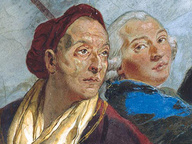Mikhail Roginsky. Oltre la Porta rossa

© Mikhail Roginsky Foundation | Mikhail Roginsky, Interno rosa, 1981. Acrilico su carta
Dal 7 June 2014 al 23 November 2014
Venezia
Luogo: Ca’ Foscari
Indirizzo: Dorsoduro 3246
Curatori: Elena Rudenko
Telefono per informazioni: +39 049 663499
E-Mail info: gestione3@studioesseci.net
Sito ufficiale: http://www.unive.it
Quella che si potrà ammirare dal 7 giugno al 23 novembre a Ca’ Foscari sarà la prima mostra italiana di Mikhail Roginsky, il cosiddetto “padre della pop art russa”.
La mostra «Mikhail Roginsky. Oltre la Porta rossa» è organizzata dall’Ateneo veneziano e dalla Fondazione Mikhail Roginsky nell'ambito della 14. Biennale d'Architettura di Venezia.
La scelta di Elena Rudenko, curatrice dell’esposizione (Commissario del progetto: Ekaterina Kondranina; Direttori scientifici: Prof.ssa Silvia Burini e Prof. Giuseppe Barbieri) è precisa: focalizzare la mostra sulle opere della maturità dell'artista (1978-2003). L'arco di anni in cui Mikhail Roginsky visse a Parigi. Questo fondamentale periodo di Roginsky sarà così indagato in modo ampio, con un focus sulla pittura e sui concetti strutturali ad essa immanenti: colore, forma, costruzione.
L’esposizione, e non è un caso, prende avvio da un’opera precedente alla stagione parigina. Con quella «Porta rossa» (1965) che appartiene al periodo sovietico dell’artista e che di lui è certamente una delle creazioni più famose ma anche una delle più ermetiche. La «porta» è idealmente quella che l’artista scavalca, abbandonando il cliché di artista politicizzato, dedito a concezioni complesse, per approdare appunto ai nuovi ambiti della pittura.
Spesso considerata dai critici come un oggetto del ready made, la “Porta” preconizza invece proprio il suo passaggio alla pittura: l’artista stesso sottolineava lo stretto legame di quest’opera con la pittura da cavalletto.
Con “La porta rossa” Roginsky dichiara la volontà di superare ogni convenzionalità del linguaggio artistico dominante. L’opera rappresentò, nell’Unione Sovietica postbellica, uno dei primi tentativi di de-costruzione della bidimensionalità della superficie pittorica.
Qui si trovano le premesse del suo manifesto antiestetismo, l'avversione dell'artista per la stessa parola «arte», da lui intesa come un complesso di cose create artificialmente, avvizzite dal secolare uso o oberate dal peso di una ipocrita ideologia.
I curatori della mostra propongono di lasciare fuori dalla porta il cumulo delle erronee definizioni, di destituire gli stereotipi che hanno snaturato la percezione dell'opera, tornando alle sue origini. La mostra si snoda come un racconto del complesso iter evolutivo dell'artista, per questo il motivo conduttore costitutivo è il viaggio come metafora del cammino creativo.
Si tratta di un viaggio privo di uno schema consequenziale, deputato a semplificare la comprensione dell'opera di Roginsky. L'artista è presentato in tutta la sua ampiezza creativa e l'unità del quadro generale non si basa sull'elemento cronologico ma sul materiale visivo della mostra.
Dallo spazio con le nature morte semiastratte sugli scaffali, che superano la figuratività, lo spettatore passa verso una natura morta minimalista rappresentata da semplici «ritratti» di oggetti semplici, incrollabili nella loro plastica certezza. Dalla sala con i grandi lavori acrilici su carta, che simulano l'imperturbabilità della pittura «alta» e interpretano in modo ironico i suoi generi principali, lo spettatore entra nell’alterato,suggestivo mondo dell'espressionista, che tenta di dare voce urlata, per mezzo dell'arte, al tormentato processo di perdita dell'armonia. Il tutto lungo 8 sezioni in cui le 120 opere sono presentate insieme ad un ampio corredo di immagini fotografiche e video (molti inediti). A documentare un percorso che prende avvio dal momento in cui l’artista fa nuovamente ricorso all’abc della pittura, ricercando i colori puri e mischiati, le correlazioni tra i volumi, il ritmo compositivo. Per approdare alla fase conclusiva della su ricerca e della sua stessa esistenza. Quando i frequenti rientri in patria stimolano un nuovo cambiamento nella sua pittura. La Mosca sovietica e post sovietica acquisisce lo stesso valore di fatto artistico che ebbe Parigi per gli Impressionisti o la profonda America per Edward Hopper. La Mosca di Mikhail Roginsky, un mondo ispirato dalla sua memoria e immaginazione, spinge lo spettatore alla «riconoscibilità» di luoghi, situazioni e personaggi concreti. Stimolando chi guarda a percepire le tele bidimensionali come un corrispettivo della realtà.
La mostra «Mikhail Roginsky. Oltre la Porta rossa» è organizzata dall’Ateneo veneziano e dalla Fondazione Mikhail Roginsky nell'ambito della 14. Biennale d'Architettura di Venezia.
La scelta di Elena Rudenko, curatrice dell’esposizione (Commissario del progetto: Ekaterina Kondranina; Direttori scientifici: Prof.ssa Silvia Burini e Prof. Giuseppe Barbieri) è precisa: focalizzare la mostra sulle opere della maturità dell'artista (1978-2003). L'arco di anni in cui Mikhail Roginsky visse a Parigi. Questo fondamentale periodo di Roginsky sarà così indagato in modo ampio, con un focus sulla pittura e sui concetti strutturali ad essa immanenti: colore, forma, costruzione.
L’esposizione, e non è un caso, prende avvio da un’opera precedente alla stagione parigina. Con quella «Porta rossa» (1965) che appartiene al periodo sovietico dell’artista e che di lui è certamente una delle creazioni più famose ma anche una delle più ermetiche. La «porta» è idealmente quella che l’artista scavalca, abbandonando il cliché di artista politicizzato, dedito a concezioni complesse, per approdare appunto ai nuovi ambiti della pittura.
Spesso considerata dai critici come un oggetto del ready made, la “Porta” preconizza invece proprio il suo passaggio alla pittura: l’artista stesso sottolineava lo stretto legame di quest’opera con la pittura da cavalletto.
Con “La porta rossa” Roginsky dichiara la volontà di superare ogni convenzionalità del linguaggio artistico dominante. L’opera rappresentò, nell’Unione Sovietica postbellica, uno dei primi tentativi di de-costruzione della bidimensionalità della superficie pittorica.
Qui si trovano le premesse del suo manifesto antiestetismo, l'avversione dell'artista per la stessa parola «arte», da lui intesa come un complesso di cose create artificialmente, avvizzite dal secolare uso o oberate dal peso di una ipocrita ideologia.
I curatori della mostra propongono di lasciare fuori dalla porta il cumulo delle erronee definizioni, di destituire gli stereotipi che hanno snaturato la percezione dell'opera, tornando alle sue origini. La mostra si snoda come un racconto del complesso iter evolutivo dell'artista, per questo il motivo conduttore costitutivo è il viaggio come metafora del cammino creativo.
Si tratta di un viaggio privo di uno schema consequenziale, deputato a semplificare la comprensione dell'opera di Roginsky. L'artista è presentato in tutta la sua ampiezza creativa e l'unità del quadro generale non si basa sull'elemento cronologico ma sul materiale visivo della mostra.
Dallo spazio con le nature morte semiastratte sugli scaffali, che superano la figuratività, lo spettatore passa verso una natura morta minimalista rappresentata da semplici «ritratti» di oggetti semplici, incrollabili nella loro plastica certezza. Dalla sala con i grandi lavori acrilici su carta, che simulano l'imperturbabilità della pittura «alta» e interpretano in modo ironico i suoi generi principali, lo spettatore entra nell’alterato,suggestivo mondo dell'espressionista, che tenta di dare voce urlata, per mezzo dell'arte, al tormentato processo di perdita dell'armonia. Il tutto lungo 8 sezioni in cui le 120 opere sono presentate insieme ad un ampio corredo di immagini fotografiche e video (molti inediti). A documentare un percorso che prende avvio dal momento in cui l’artista fa nuovamente ricorso all’abc della pittura, ricercando i colori puri e mischiati, le correlazioni tra i volumi, il ritmo compositivo. Per approdare alla fase conclusiva della su ricerca e della sua stessa esistenza. Quando i frequenti rientri in patria stimolano un nuovo cambiamento nella sua pittura. La Mosca sovietica e post sovietica acquisisce lo stesso valore di fatto artistico che ebbe Parigi per gli Impressionisti o la profonda America per Edward Hopper. La Mosca di Mikhail Roginsky, un mondo ispirato dalla sua memoria e immaginazione, spinge lo spettatore alla «riconoscibilità» di luoghi, situazioni e personaggi concreti. Stimolando chi guarda a percepire le tele bidimensionali come un corrispettivo della realtà.
SCARICA IL COMUNICATO IN PDF
COMMENTI

-
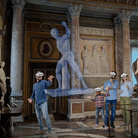 Dal 9 January 2026 al 27 February 2026
Roma | Galleria Borghese
Dal 9 January 2026 al 27 February 2026
Roma | Galleria Borghese
Sguardi oltre il tempo
-
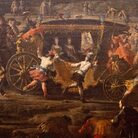 Dal 20 December 2025 al 20 April 2026
Caserta | Reggia di Caserta
Dal 20 December 2025 al 20 April 2026
Caserta | Reggia di Caserta
Regine: trame di cultura e diplomazia tra Napoli e l’Europa
-
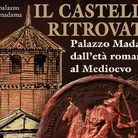 Dal 19 December 2025 al 23 March 2026
Torino | Palazzo Madama - Museo Civico d’Arte Antica
Dal 19 December 2025 al 23 March 2026
Torino | Palazzo Madama - Museo Civico d’Arte Antica
Il castello ritrovato. Palazzo Madama dall’età romana al medioevo
-
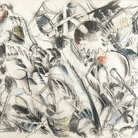 Dal 17 December 2025 al 19 January 2026
Roma | Palazzo della Cancelleria
Dal 17 December 2025 al 19 January 2026
Roma | Palazzo della Cancelleria
De Humana Mensura di Linda Karshan
-
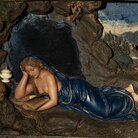 Dal 18 December 2025 al 12 April 2026
Firenze | Gallerie degli Uffizi
Dal 18 December 2025 al 12 April 2026
Firenze | Gallerie degli Uffizi
Cera una volta. Sculture dalle collezioni medicee
-
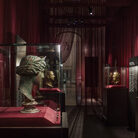 Dal 11 December 2025 al 9 April 2026
Firenze | Museo Archeologico Nazionale di Firenze
Dal 11 December 2025 al 9 April 2026
Firenze | Museo Archeologico Nazionale di Firenze
Icone di Potere e Bellezza
